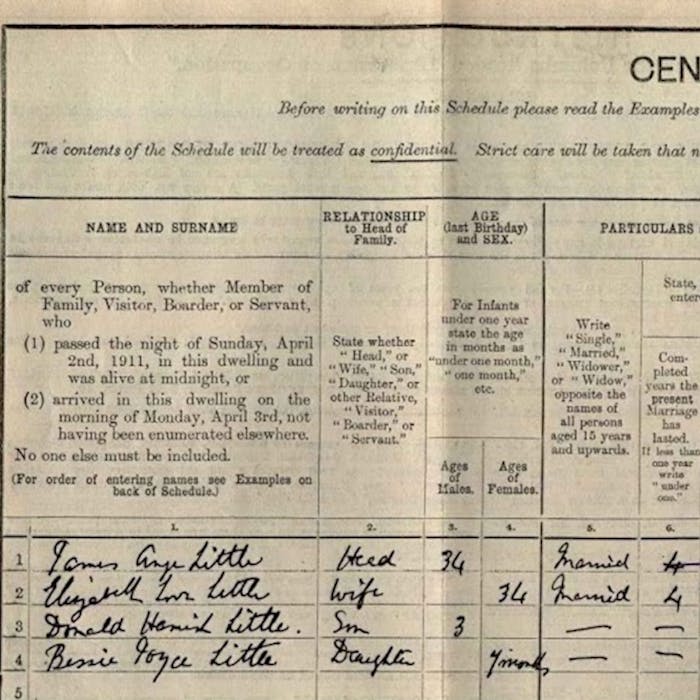
The British Census
Every ten years since 1801 details of people living in the United Kingdom are collected by the government in order to gather demographic information, calculate resource allocation and monitor changes in the nation’s population.
At first the census was merely a headcount, with almost no personal information, such as names and ages, recorded. Names of individuals and their occupations were first recorded in 1841, making the national census a wealth of information for sociologist, genealogists and family historians alike.
In 1798 statistician John Rickman wrote an article outlining the usefulness in conducting a census. He presented twelve reasons, stating “the intimate knowledge of any country must form the rational basis of legislation and diplomacy” and “an industrious population is the basic power and resource of any nation, and therefore its size needs to be known.”
One worry was that food supplies would not be able to keep up with the nation’s apparently growing population.
Another major reason to conduct the census was to find out how many men were available to defend the seas and fight in the Napoleonic Wars.
In 1800 the Census Act was passed in Parliament and in 1801 the first ever detailed, national survey was carried out. The census revealed a population of almost 10 million.
The census taken in 1841 is widely regarded as the first truly modern census, when the first Registrar General of England and Wales, John Lister, was made responsible for organising the count.
For the first time, the head of each household was given a form to fill in on behalf of everyone in the household on a certain day. This system has stood the test of time, and it still forms the basis of the method we use today.
Since 1801 there has been a census every ten years except in 1941, during the Second World War. The basic principles of census taking remain the same, though new questions have been added and others have been omitted.
The 1951 census encouraged women to be honest about their age and was also the first to ask about ‘household facilities’ (outdoor toilets) as the country was eager to rebuild housing after the war.
In 1961 a computer was used for the first time to process results, and it took five and a half years to do so!
Further reading
Links to external websites are not maintained by Bite Sized Britain. They are provided to give users access to additional information. Bite Sized Britain is not responsible for the content of these external websites.
